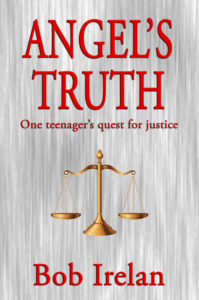



Outer Banks Publishing Group author Mary L. Tabor contributed her writing expertise on Day 3 of a 30-day writing challenge sponsored by Wattpad.
Watch her video on creating the right point of view
Learn more with Mary’s bestselling stories about women’s challenges in today’s hyperspeed society, The Woman Who Never Cooked. The book is now published in its second edition by Outer Banks Publishing Group and available in our bookstore, on Amazon and in bookstores everywhere. The book is
“The American adult woman is featured in this debut collection of stories about love, adultery, marriage, passion, death, and family. There is a subtle humor here, and an innate wisdom about everyday life as women find solace in cooking, work, and chores. Tabor reveals the thoughts of her working professional women who stream into Washington, D.C., from the outer suburbs, the men they date or marry, and the attractive if harried commuters they meet.
“Her collection of short stories The Woman Who Never Cooked, published when she was 60, won the Mid-List Press First Series Award.
“Mary Tabor writes with astonishing grace, endless passion, and subtle humor,” wrote reviewer Melanie Rae Thon.
https://www.outerbankspublishing.com/writing/novel-writing-is-like-taking-a-good-photograph/
WHEREVER THE TIDE OF LIFE TAKES YOU AND YOUR LOVED ONES
The Origin of New Year’s Day
From the History Channel
The first New Year’s Day was celebrated on January 1 in the year 45 B.C. for the first time in history as the Julian calendar took effect.
Soon after becoming Roman dictator, Julius Caesar decided that the traditional Roman calendar was in dire need of reform.
Introduced around the seventh century B.C., the Roman calendar attempted to follow the lunar cycle but frequently fell out of phase with the seasons and had to be corrected. In addition, the pontifices, the Roman body charged with overseeing the calendar, often abused its authority by adding days to extend political terms or interfere with elections.
In designing his new calendar, Caesar enlisted the aid of Sosigenes, an Alexandrian astronomer, who advised him to do away with the lunar cycle entirely and follow the solar year, as did the Egyptians.
The year was calculated to be 365 and 1/4 days, and Caesar added 67 days to 45 B.C., making 46 B.C. begin on January 1, rather than in March. He also decreed that every four years a day be added to February, thus theoretically keeping his calendar from falling out of step.
Shortly before his assassination in 44 B.C., he changed the name of the month Quintilis to Julius (July) after himself. Later, the month of Sextilis was renamed Augustus (August) after his successor.
Celebration of New Year’s Day in January fell out of practice during the Middle Ages, and even those who strictly adhered to the Julian calendar did not observe the New Year exactly on January 1. The reason for the latter was that Caesar and Sosigenes failed to calculate the correct value for the solar year as 365.242199 days, not 365.25 days. Thus, an 11-minute-a-year error added seven days by the year 1000, and 10 days by the mid-15th century.
The Roman church became aware of this problem, and in the 1570s Pope Gregory XIII commissioned Jesuit astronomer Christopher Clavius to come up with a new calendar. In 1582, the Gregorian calendar was implemented, omitting 10 days for that year and establishing the new rule that only one of every four centennial years should be a leap year. Since then, people around the world have gathered en masse on January 1 to celebrate the precise arrival of the New Year.
By Anthony S. Policastro, Publisher When writing a novel it is a bit like taking that award-winning photograph. Don’t worry, you don’t have to take great photographs to be a great novelist.
In today’s world with dozens of media channels bombarding us every minute of the day, your book has to stand out from all the noise.
Here are elements that should be included in your novel and help to make your book stand out. You can pick and choose a few or include all, but you should have at least one.
Now here is how writing is like photography. Look at the photo below. Pretend it’s your realty – what you perceive through your senses. Now write a story about that photograph. You would describe the scenery, the asphalt path, the fallen leaves and twigs…overall what you wrote is pretty boring and a nondescript story unless those elements play a part in your plot.

Neuse River Greenway trail, Raleigh, NC
If you look closely or view the scene from a different angle or perspective there is a better story there. 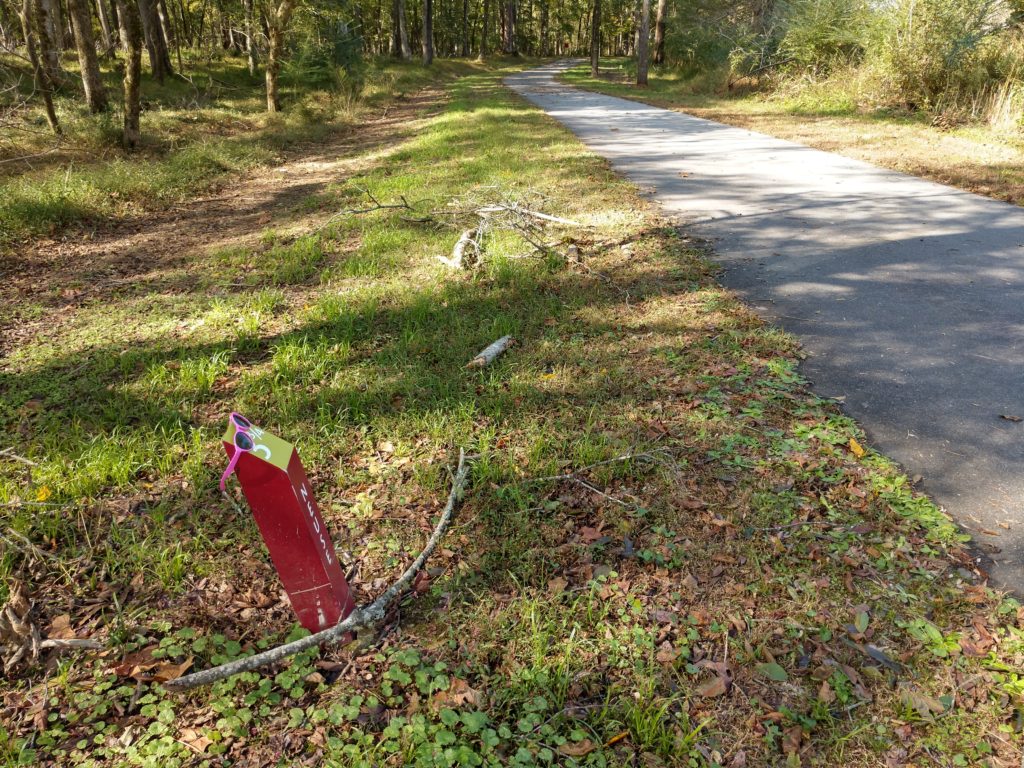 The story reveals itself upon a closer look – a nice person found the pink sunglasses on the trail and was considerate enough to place them on the milepost, hoping the person would pass this way again and find the sunglasses. Out of the reality emerges a story.
The story reveals itself upon a closer look – a nice person found the pink sunglasses on the trail and was considerate enough to place them on the milepost, hoping the person would pass this way again and find the sunglasses. Out of the reality emerges a story.  The photographer views and analyzes the light, shadows, colors, shapes and how they play against each other and then picks an angle or position for the shot. Writing is the same. A good book is like taking a snapshot of reality, analyzing that realty, digging deeper until the hidden story is found in plain sight and then putting it to words. Tell us what you think. We would love to hear your thoughts.
The photographer views and analyzes the light, shadows, colors, shapes and how they play against each other and then picks an angle or position for the shot. Writing is the same. A good book is like taking a snapshot of reality, analyzing that realty, digging deeper until the hidden story is found in plain sight and then putting it to words. Tell us what you think. We would love to hear your thoughts.
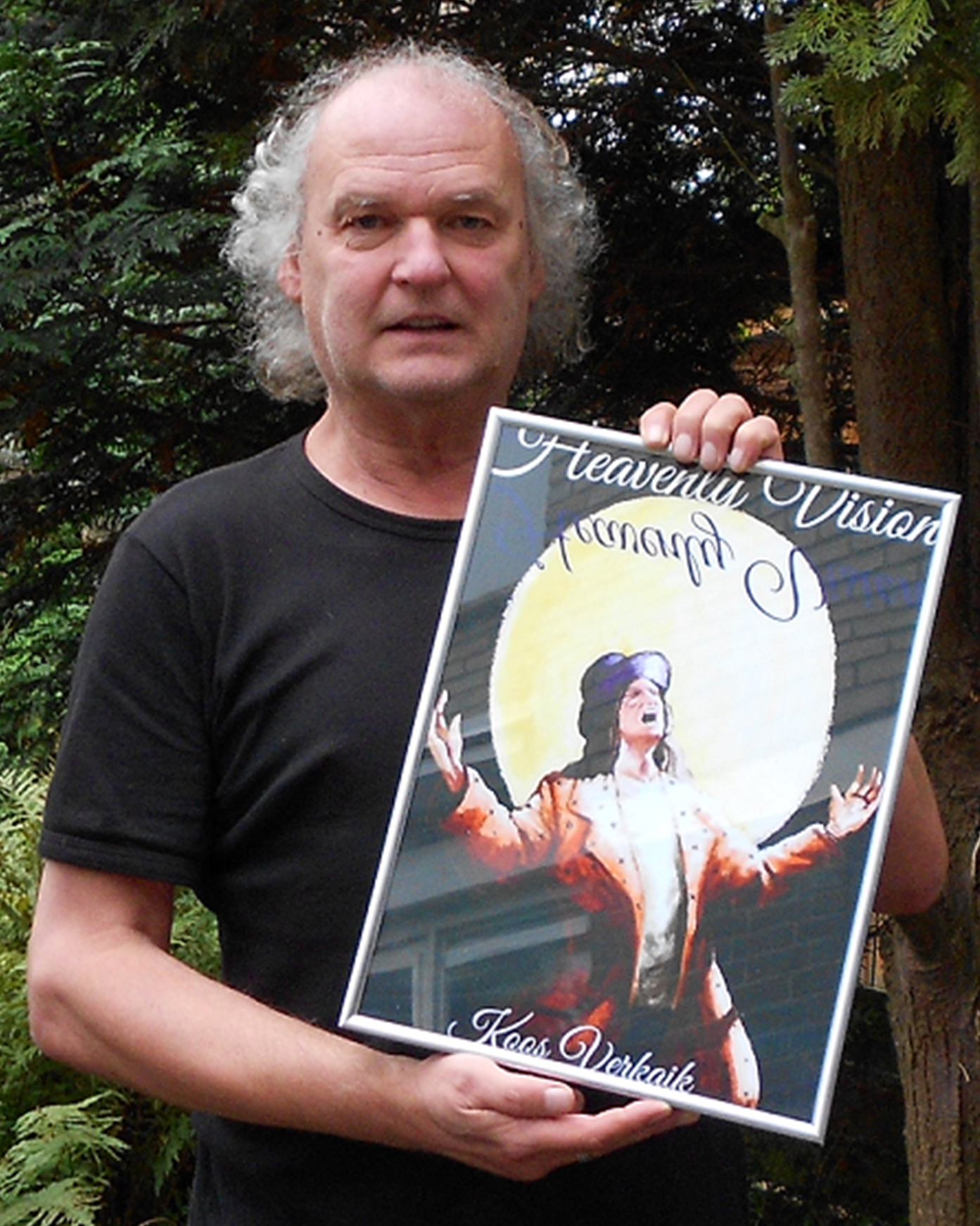
Koos Verkaik’s newest novel Heavenly Vision is about a book collector who finds a manuscript in a 1745 Atlas of the Cape of Good Horn that changes his life forever. Read the interview by Deborah Kalb on how Koos was inspired to write the murder mystery, Heavenly Vision.
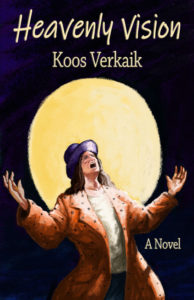
Q: How did you come up with the idea for Heavenly Vision?
A: For most of my books all I need is one simple fact. One line, one thought, will do to get me start writing. Where Heavenly Vision is concerned, I was intrigued by the fact that you can buy yourself an old book at a flea market and find a priceless drawing or etching between the yellowed pages! That stimulates my fantasy and I get cracking right away – not knowing at all where and when it will end.
I always start to write the first two or three pages with a simple pen on sheets of paper. Only after I know it is all right, I start working on a computer.
Sitting down in silence and write the lines with a pen is something I will always enjoy.
Q: The book takes place in a variety of locations and times. Did you write the novel in the order in which it appears, or did you move chapters around as you wrote?
A: I wrote it in the order in which it appears! When I start writing, there is a complete chaos in my head, but the manuscript must be one hundred percent all right. I make notes on sheets of papers, on beermats, on three different laptops, sometimes on the back of my hand – but finally it all comes together in the manuscript.
After having typed “The End,” the chaos has disappeared. The work is done. Then I take a deep breath… and start working on the next project.
Q: Did you know how the book would end before you started writing it?
A: I never know how my books will end. I know there are authors who make a storyboard, who only start writing after they have figured it all out.
For me every new book is an adventure – for myself and for my readers. The story grows and to be honest; I do know where to go with my stories, it is all somewhere in my head and it has to come out. I never had writer’s block; I have written since I was 7 years old and as a boy I worked at night and saw the sun come up.
Q: How did you research the novel, and did you learn anything surprising?
A: Research is always important. And… the internet is there for the common facts, books are there for the real information. In my work room I am surrounded by a couple of thousand books; I absorb the facts and write fantasy.
Right now I am reading Sapiens and Homo Deus from Yuval Noah Harari. Such a great writer about the history and the future of mankind.
For Heavenly Vision I didn’t have to do much research. Most of the things I wrote about (such as the Dutch East India Company) were already known to me. I am a collector of nonfiction books about science, but also about alchemy, the supernatural, mysterious historical facts, etc. Life is full of odd surprises and I love to write about it.
Q: What are you working on now?
A: I always write different books at the same time. There are two series of children’s books, Saladin the Wonder Horse and Alex and the Wolpertinger. Finished the last book of Saladin and work on book 14 of The Wolpertinger; intending to write over 30 different titles.
A new publishing company contracted me for all my novels: Righter’s Mill Press, Princeton. They also have a film company, Three Corners Entertainment. Signed contracts for all titles.
Right now I also started a new novel. And I never tell about a new story until it is finished… When I explain all about it, I feel less urge to complete it.
Q: Anything else we should know?
A: Yes. Heavenly Vision was published earlier by a Canadian company. Unfortunately the publisher passed away. We had become such good friends, She was such a great person.
Now Outer Banks Publishing Group has taken over; they will also publish my novel The Nibelung Gold soon and they already published the two series of children’s books I mentioned above.
I received wonderful reviews for the first edition of Heavenly Vision, which made me very proud (believe me, it is a great adventure and also a great honor to be published in Canada and the USA when you are a writer from faraway Holland).
About Koos Verkaik
Koos Verkaik, who lives outside of Rotterdam, Holland, is the author of more than 60 books from children’s series to mysteries to sci-fi. When his novels, All-Father and Wolf Tears were published, he earned the moniker as the Dutch Stephen King.
About the cover of Heavenly Vision
The cover was commissioned and created by Doriano Strologo, an illustrator in Numana, Italy, depicting the main character in the book, the mysterious Raso, the man who had the heavenly vision.
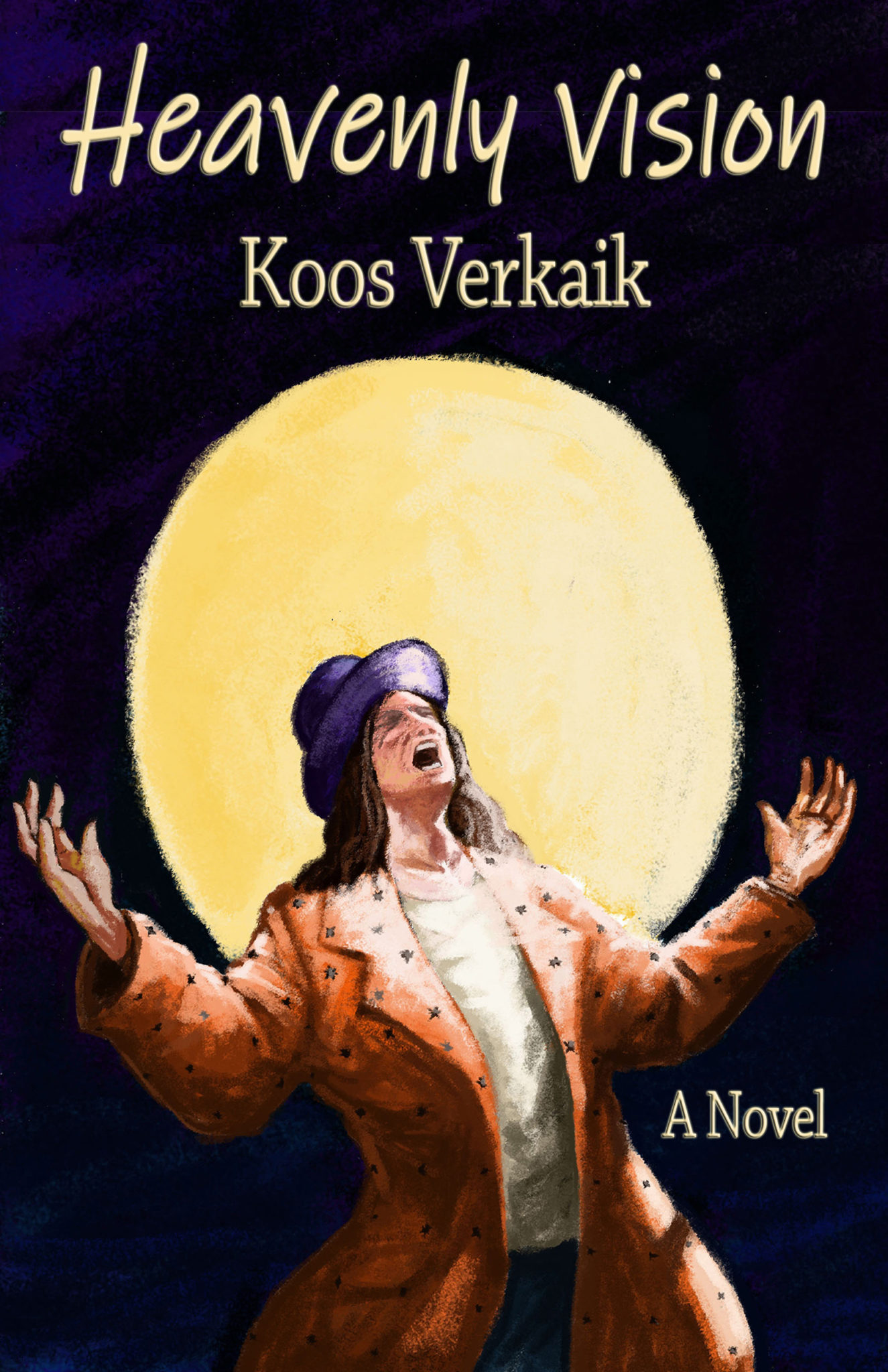
Nothing is what it seems, in this new, exciting Koos Verkaik novel – Heavenly Vision, undoubtedly one of his masterpieces!
A book collector of limited means comes across a 1745 Atlas of the Cape of Good Hope in a second-hand bookshop in Amsterdam. Once his historian friend examines the manuscript found inside, he becomes very excited and life for Jan Glas is never the same again.
“Allart Vroom climbed down from the ship, and we stood ready to catch him,” wrote Captain Adriaen Kalf. “His clothes, his flesh, his bones pulverized in our hands. He formed a small heap of powder at our feet. Please, believe me—it is not, like someone suggested, the contents of broken hourglasses.”
Glas, an Amsterdam publicist, later reads about a machine that could cause the end of the world! Of course, he wants to find the truth about the machine and the remarkable manuscript!
His curiosity takes him takes him to England and the USA. In Florida, a peculiar man crosses his path – Wesley Dunn, a Raso Preacher at the Center of the Heavenly Vision in Franks Knight, Florida.
This man says that the world will be destroyed by “The Machine of Colton”, which is also mentioned in the manuscript that Jan found in the atlas! Only a few people will survive – the true followers of the odd Mr. Wesley Dunn, and those who follow the Raso way of life!
Murder, mystery and intrigue will keep the reader guessing as to what is going on. Is the world coming to an end, and if so, who will survive?
To learn more about Heavenly Vision and Koos Verkaik read his latest interview with Deborah Kalb, Book Q&As with Deborah Kalb.
A cast of likable, unlikable and quirky characters, along with a very original and interesting story makes for a fantastic read. I liked the writing style, going back to the past and present, and the characters, all unique in their own way.
I recommend Heavenly Vision to those who like adventure , drama and excitement. I also recommend The Nibelung Gold also by Koos Verkaik.
By the end the author had impressed me so much that I was not sure whether to applaud the brilliance of the character in the story or the creator of that character that is the author. The twist or final pull was that good of a brilliance charm.
As usual Koos Verkaik brings a mélange of quirky characters to life. The good, the bad, but never the indifferent. He then weaves them into a mystical tale that moves between the present and the past of a strange machine that kills at will and a prophecy of doom. His unique writing style holds the reader’s interest from beginning to an end of the world scenario, as he builds the tension during a well plotted fantastical journey full of intrigue and mysteries.
This is another MUST for readers of strange and unique tales from the undisputed master with one of his whacky covers that I love…
If you like books that bounce back and forth between the past 1700s, and the present then this is the book for you. It makes it a little confusing, but if you are willing to hang in there it all becomes clear in the end. In the past we have an old manuscript, in the present we have a machine that is said to be able to end the world. What are the connections if any between these two? The author has taken these two events and woven them into a story that will have you reading cover to cover just to find that connections. Once again this author has created a book that grabs you and forces you to read to find the answer to all of those questions you had at the beginning. I applaud him for this ability.
Koos Verkaik was born in Holland, near Rotterdam. He worked as a copywriter for a short time. His first comics (three pages each week) were published in the magazine Sjors when he was only 16 years old. He wrote his first novel (sci-fi) in a weekend at the age of 18 and it was published immediately. During his long career as a novelist and author, he wrote hundreds of comic scripts and published over 60 books, both children’s books and urban fantasy novels. Koos writes (novels) every day and has translated books from English and German into Dutch.
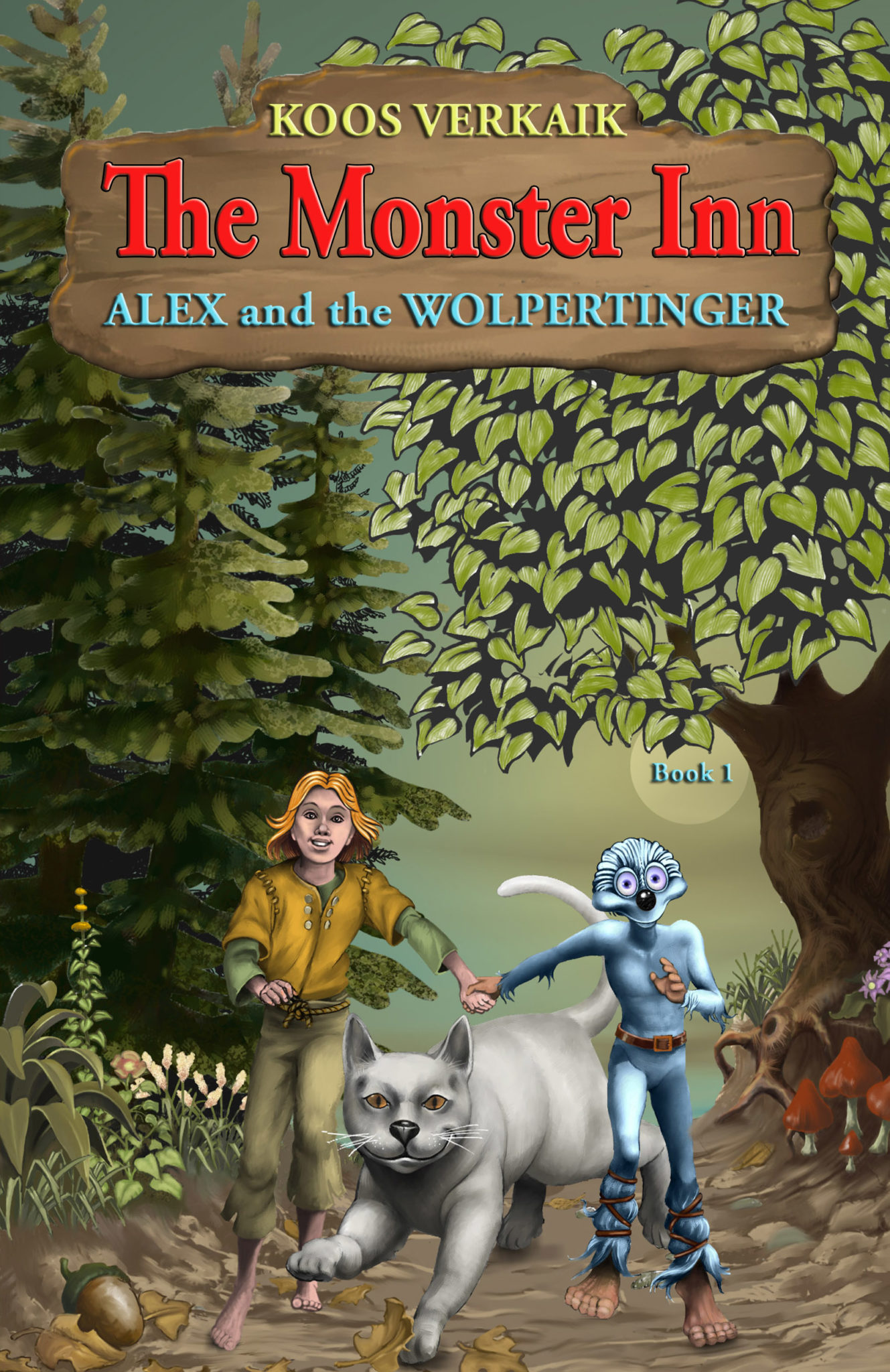
Let your child travel on an adventurous journey this summer with Alex and Ludo the Wolpertinger on a enthralling trip to find The Monster Inn, a wondrous place where the most fascinating characters show up!
By Koos Verkaik
Wolpertingers… little monsters or friends?
Teasers or small helpful creatures?
Actually, everyone is a bit afraid of them.
Humans and giants run away the moment they spot a wolpertinger.
And yet, a boy made friends with a wolpertinger from the mysterious Downhills!
It was Alex, a boy from the Alps, who lived in the land of King Clover a long time ago.
Alex and Ludo the Wolpertinger go from one adventure to another!
Together they travel to the Downhills to help free a magician who is a prisoner of the giant Prince Ruff Rumble.
They meet many strange creatures like a river monster, fire-breathing dragons, lizards and giant mice on their trip to the Monster Inn. There they hope to find someone who can make gold to free the imprisoned magician, Halo from Prince Ruff Rumble’s dungeon.
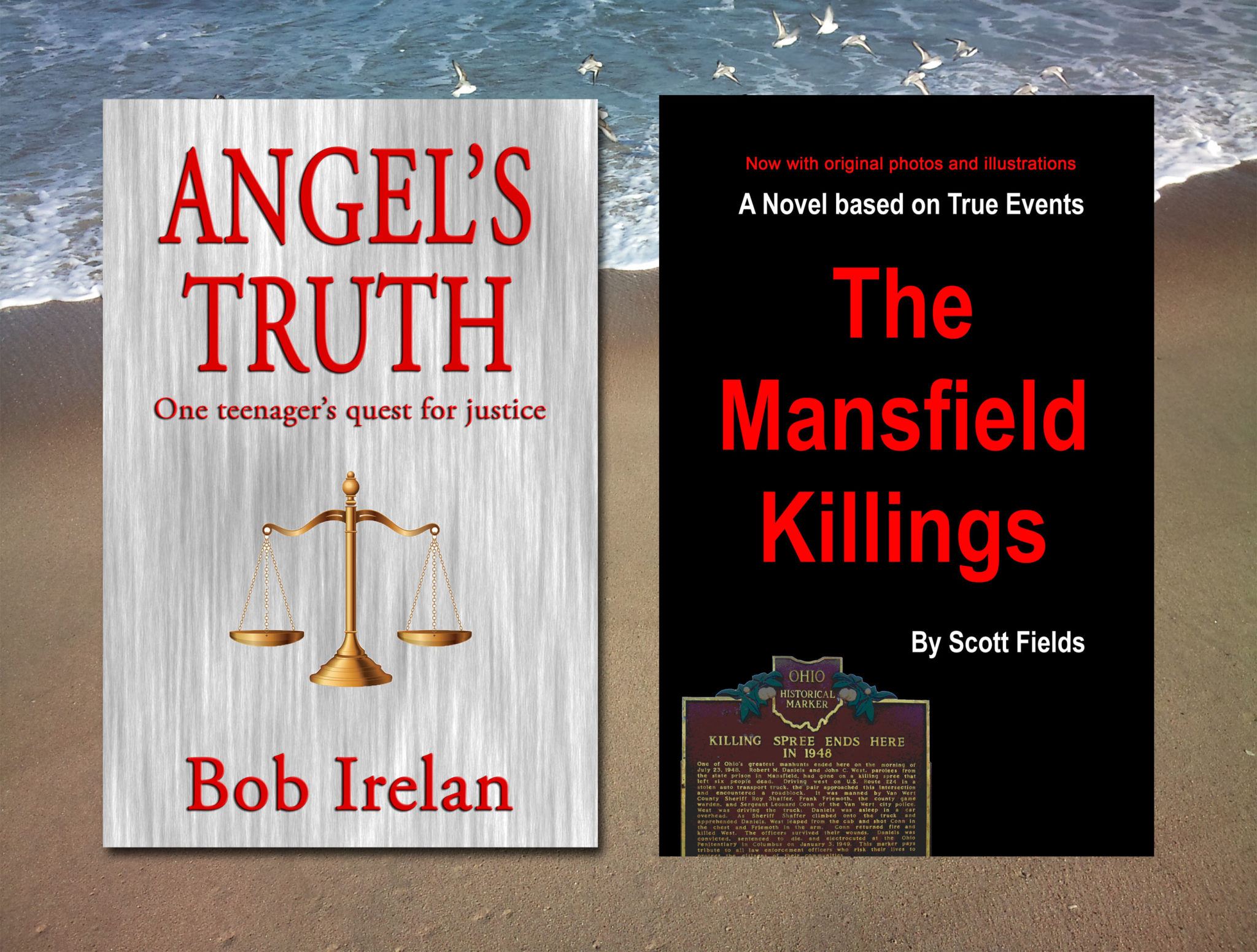
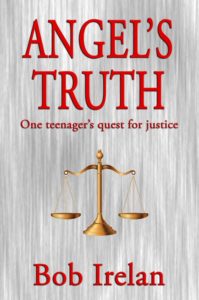
List Price: $15.99
5.5″ x 8.5″ (13.97 x 21.59 cm)
Black & White on White paper
268 pages
Outer Banks Publishing Group
ISBN-13: 978-0990679080
ISBN-10: 099067908X
BISAC: Fiction / Crime
Angel Gonzales is charged with heinous crimes that law enforcement, the media, and most folks in Richmond, Texas, and surrounding communities are certain he committed.
The crimes and trial dwarf anything that has happened in that part of the Lone Star state in anyone’s memory.
When, against all odds, the jury renders “not guilty” verdicts, shock escalates to anger.
In the minds of many, justice has failed, and a brutal criminal is being set free. For Angel and his court-appointed public defender, Marty Booker, being judged “not guilty” isn’t enough.
Together and with help from an unanticipated source, they attempt to prove Angel’s innocence.
In the process, they butt up against prejudice, deceit, and a sheriff and district attorney who put politics, ambition, expedience, and arrogance above responsibility to do their jobs.
It’s a story of horror, hatred, belief, and persistence – a story of a Mexican-American teenager who nearly loses his life on the way to becoming a man.
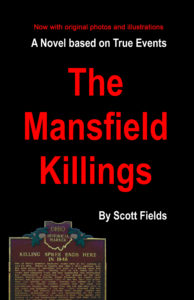

SOON TO BE A MAJOR MOTION PICTURE in 2019
Price: $14.99
5.5″ x 8.5″ (13.97 x 21.59 cm)
Black & White on Cream paper
280 pages
ISBN 10 – 0982993137
ISBN 13 – 978-0-9829931-3-2
Binding Type: US Trade Paper
Language: English
On the night of July 21, 1948, Robert Daniels and John West entered John and Nolena Niebel’s house with loaded guns. They forced the family including the Niebel’s 21-year-old daughter, Phyllis, into their car and drove them to a cornfield just off Fleming Falls Road in Mansfield. The two men instructed the Niebels to remove all of their clothing, and then Robert Daniels shot each of them in the head.
What followed was the worst two-week killing spree in the history of Ohio.
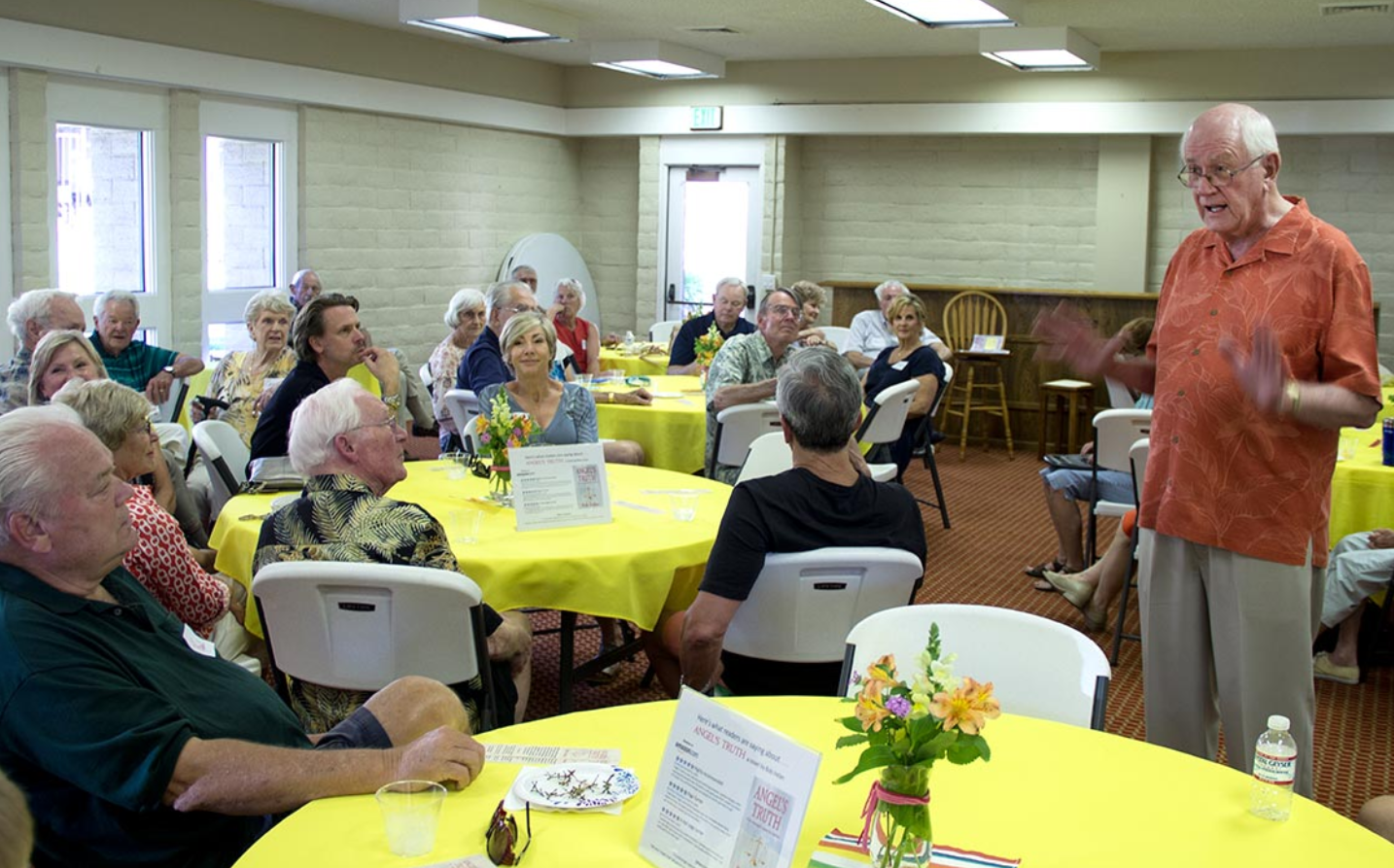

Top of the page photo courtesy of Rancho Murieta Community Website
Book signings are an effective marketing and communications tool, not only for established authors but most certainly for first-time novelists.
For me, a recent local launching/signing event for my first published novel, “Angel’s Truth,” proved to be a learning experience.
I learned that the audience is genuinely interested in what you have to say. And I was pleased by the number and quality of the questions.”Where did you come up with the plot? How did you choose the characters? How did you come up with their names? Is any of this based on fact? How do you go about organizing the narrative? Do you outline? Do you know the beginning, middle and end before you write? How do you go about getting published?”
That’s only a sampling of the questions I got, so be prepared.
The setting I used was a wine and cheese social, very informal, 4 to 5:30 p.m. It worked well. We had a framed table card of favorable Amazon reviews (“Here’s what readers are saying about “Angel’s Truth”) on each table and each person received a custom designed “Angel’s Truth” bookmark that quoted briefly from the book and gave information on where it could be bought. Good friends provided these and they were well received. Whether or not you bought the book, you got a bookmark as a gift and reminder.
I also told them the messages concerning discrimination, mindsets, injustices were ones I had long cared about. Also my belief that the truth often is not obvious — that it takes digging, commitment, persistence, plain old hard work to achieve it.
After being introduced, I spent a few minutes describing what motivated me to write the book. The motivations included my desire to try writing fiction after a long career that mandated all my writing be factual. I also told them the messages concerning discrimination, mindsets, injustices were ones I had long cared about. Also my belief that the truth often is not obvious — that it takes digging, commitment, persistence, plain old hard work to achieve it. And, while the plot is shaped around two vicious murders, I wanted to deliver a satisfying, surprise ending.
I read several passages from the book, starting with the first couple of pages. Because “Angel’s Truth” is a mystery, I selected other sections deeper into the book which pulled them into the plot. I didn’t tell too much, just enough to entice them to read the book and try to figure out who did what and where it was headed. That amount of time for reading passages seemed about right.



I closed with this final thought.
“Everybody has a story to tell. It may be biographical and of interest to future generations of your family. It may be a detailed narrative or a collection of anecdotes. Or, it may be fiction. Whatever the choice, I challenged them to commit their ideas to paper.”
That resonated because several folks thanked me afterwards for the prompting.
We ended with signing and selling the book. Logistically, I found it worked well to have someone serve as cashier. That allowed me time to personalize each signing.
And, as my mother would say, “Remember the basic of thanking everyone at the beginning and end.”
Bottom line, this initial event for this first-time writer of fiction, was a very satisfying and educational experience. I hope some of the above details will be helpful to you.
Learn more about Bob Irelan in his interview and why he believes truth is so important or follow him on Facebook.
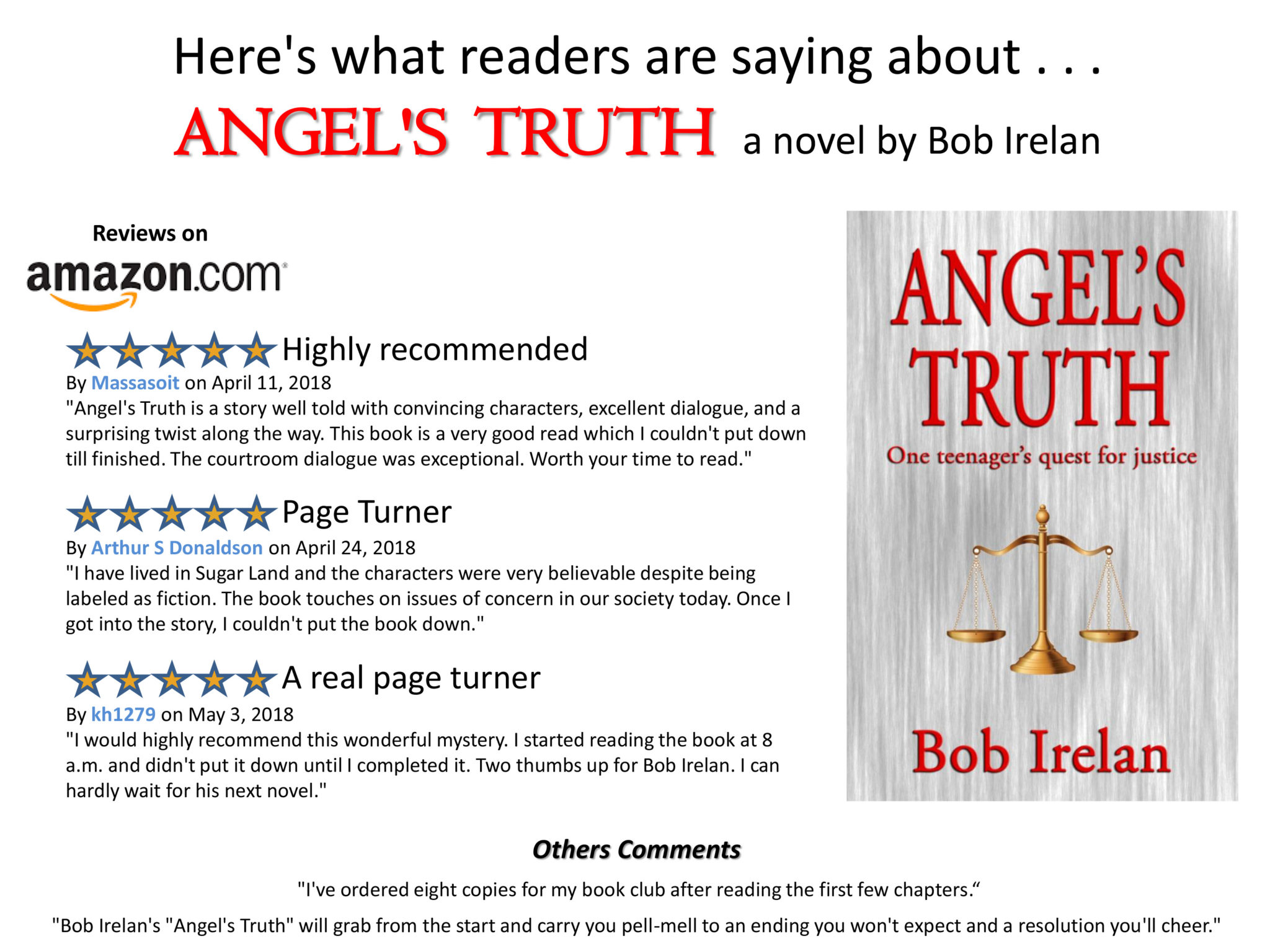

The murder mystery starts when Angel Gonzales is charged with heinous crimes that law enforcement, the media, and most folks in Richmond, Texas, and surrounding communities are certain he committed.
The crimes and trial dwarf anything that has happened in that part of the Lone Star state in anyone’s memory.
When, against all odds, the jury renders “not guilty” verdicts, shock escalates to anger.
In the minds of many, justice has failed, and a brutal criminal is being set free. For Angel and his court-appointed public defender, Marty Booker, being judged “not guilty” isn’t enough.
Together and with help from an unanticipated source, they attempt to prove Angel’s innocence.
In the process, they butt up against prejudice, deceit, and a sheriff and district attorney who put politics, ambition, expedience, and arrogance above responsibility to do their jobs.
It’s a story of horror, hatred, belief, and persistence – a story of a Mexican-American teenager who nearly loses his life on the way to becoming a man.
Outer Banks Publishing Group author Bob Irelan hopes his novel, Angel’s Truth will help people realize that justice is not always applied fairly, especially when it to comes to racial minorities
Angel’s Truth Amazon Reviews pdf